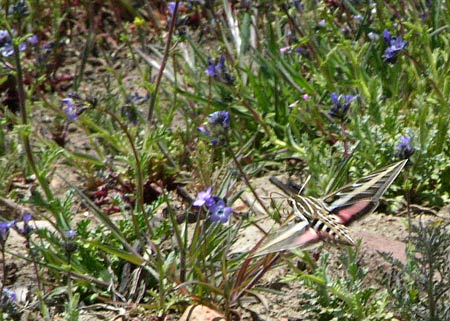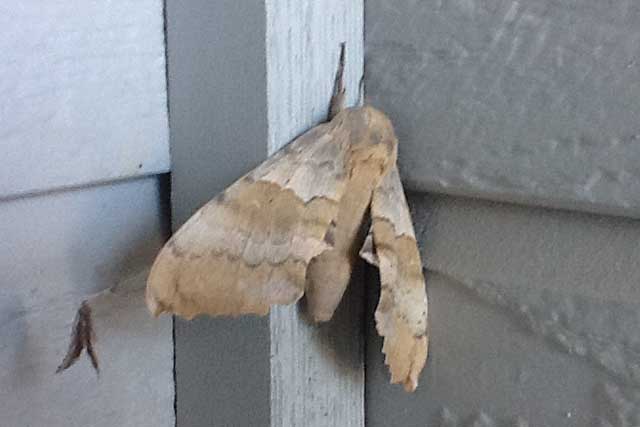Washoe County, Nevada
Sphingidae

|
|
Created/dedicated as per personal communication with Don Muse, April 2007 Updated as per James P. Tuttle's The Hawk Moths of North America, April 2010 Updated as per personal communication with Terri McLaughlin (Pachysphinx occidentalis, Washoe Valley, June 20, 2012); June 21, 2012 |

This site has been created by
Bill Oehlke at oehlkew@islandtelecom.com
Comments, suggestions and/or additional information/sightings are welcomed by Bill.
This page is inspired by and dedicated to
Don Muse of the Sierra foothills in Reno, Nevada
(Washoe County).
Don writes (April 9, 2007):
"The moth was obtaining nectar from the little blue ground cover
flower (probably Gentianopsis holopetala = Sierra gentian).
This was taken in about 2003 on an eastern
Sierra foothill during a lovely spring season."
It is hoped that this checklist, with the thumbnails and notes, will help you quickly identify the moths you are likely to encounter.
A "WO" after the species name indicates that I (William Oehlke) expect that this moth is present or might be present, although unreported. A "USGS" indicates the moth is confirmed on USGS site.
Please help me develop this list with improved, documented accuracy by sending sightings (species, date, location), preferably with an electronic image, via email to Bill Oehlke.
Many thanks also to Terri McLaughlin who sends the Pachysphinx occidentalis image below.

Pachysphinx occidentalis, Washoe Valley, Washoe County, Nevada,
June 20, 2012, courtesy of Terri McLaughlin.

Pachysphinx occidentalis, Reno, Washoe County, Nevada,
July 10, 2012, courtesy of Tim (Trooper?).
Sphinginae subfamily
Smerinthini Tribe:
Macroglossinae subfamilyDilophonotini Tribe:
Philampelini Tribe:
Macroglossini Tribe:
|
Enjoy some of nature's wonderments, giant silk moth cocoons. These cocoons are for sale winter and fall. Beautiful Saturniidae moths will emerge the following spring and summer. Read Actias luna rearing article. Additional online help available.
Eggs of many North American species are offered during the spring and summer. Occasionally summer Actias luna and summer Antheraea polyphemus cocoons are available. Shipping to US destinations is done from with in the US.
Use your browser "Back" button to return to the previous page.
This page is brought to you by Bill Oehlke and the WLSS. Pages are on space rented from Bizland. If you would like to become a "Patron of the Sphingidae Site", contact Bill.
Please send sightings/images to Bill. I will do my best to respond to requests for identification help.
 Show appreciation for this site by clicking on flashing butterfly to the left. The link will take you to a page with links to many insect sites. |